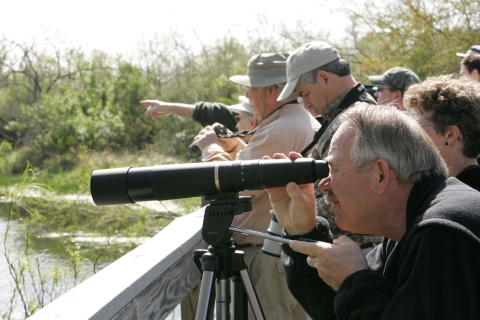Projects and Research
Working with others is at the core of how we operate, and through those partnerships, we develop a number of conservation projects across Florida, from Everglades restoration to conservation at multiple military facilities. Learn more about some of the key efforts we have underway.
The Water Resources Development Acts of 1992 and 1996 provided the U.S. Army Corps of Engineers (Corps) with the authority to review the Central and Southern Florida Project.
In the 1990s, Congressed directed the U.S. Army Corps of Engineers (Corps) to develop a comprehensive plan to restore and conserve south Florida's natural ecosystem while enhancing water supplies and...
Mitigation banking is the restoration, enhancement, creation, and in exceptional circumstances, preservation of wetlands or other aquatic habitats to provide compensatory mitigation in advance of authorized impacts to these aquatic habitats, i.e. you can improve wetlands now to balance out any damage to wetlands you may do later.
The Service is part of a multiagency team in...
USFWS Southeast Region and United States Air Force Partnership
The US Air Force is steward to millions of acres of lands used for national defense purposes that include a variety of intact ecosystems, including habitat that harbors listed and at risk species. An interagency agreement between the USFWS and Air Force solidifies the cooperation between the agencies in relying on...
Coastal areas are vitally important to fish and wildlife, supporting 40 percent of the Service’s National Wildlife Refuges, 40 percent of the Federally-listed endangered species, 50 percent of the Service’s fisheries activities, 25 percent of the Nation’s wetlands and at least 30 percent of North American wintering waterfowl.
Coastal Program
The U.S. Fish and Wildlife...
The Partners for Fish and Wildlife (PFW) Program delivers on-the-ground habitat restoration projects that benefit at-risk and federal trust species including threatened and endangered species, migratory birds, and anadromous fish. Projects restore and enhance degraded habitat and, in some cases, create new habitat.
Partners Wanted...The Miami tiger beetle was placed on the Federal list of threatened and endangered species as endangered in 2016. In September, 2021, the Service proposed designating critical habitat for the beetle. The proposal is to designate approximately 1,977 acres as critical habitat for the species in Miami-Dade County, Florida. A draft economic analysis (DEA) is also available for the...









